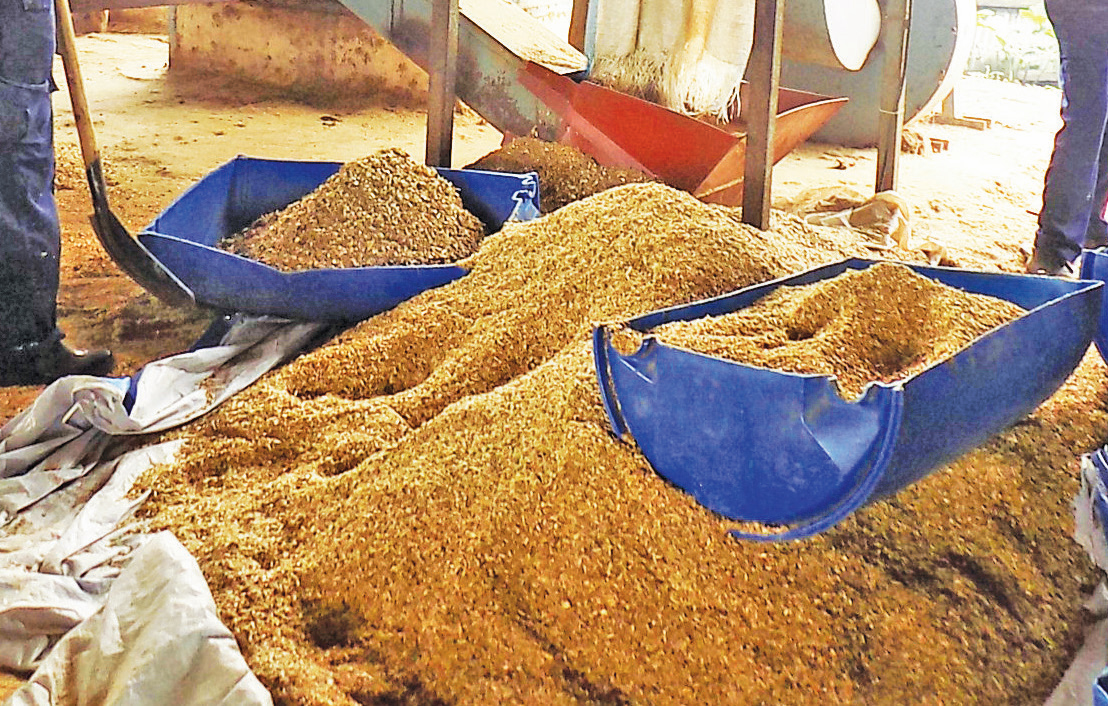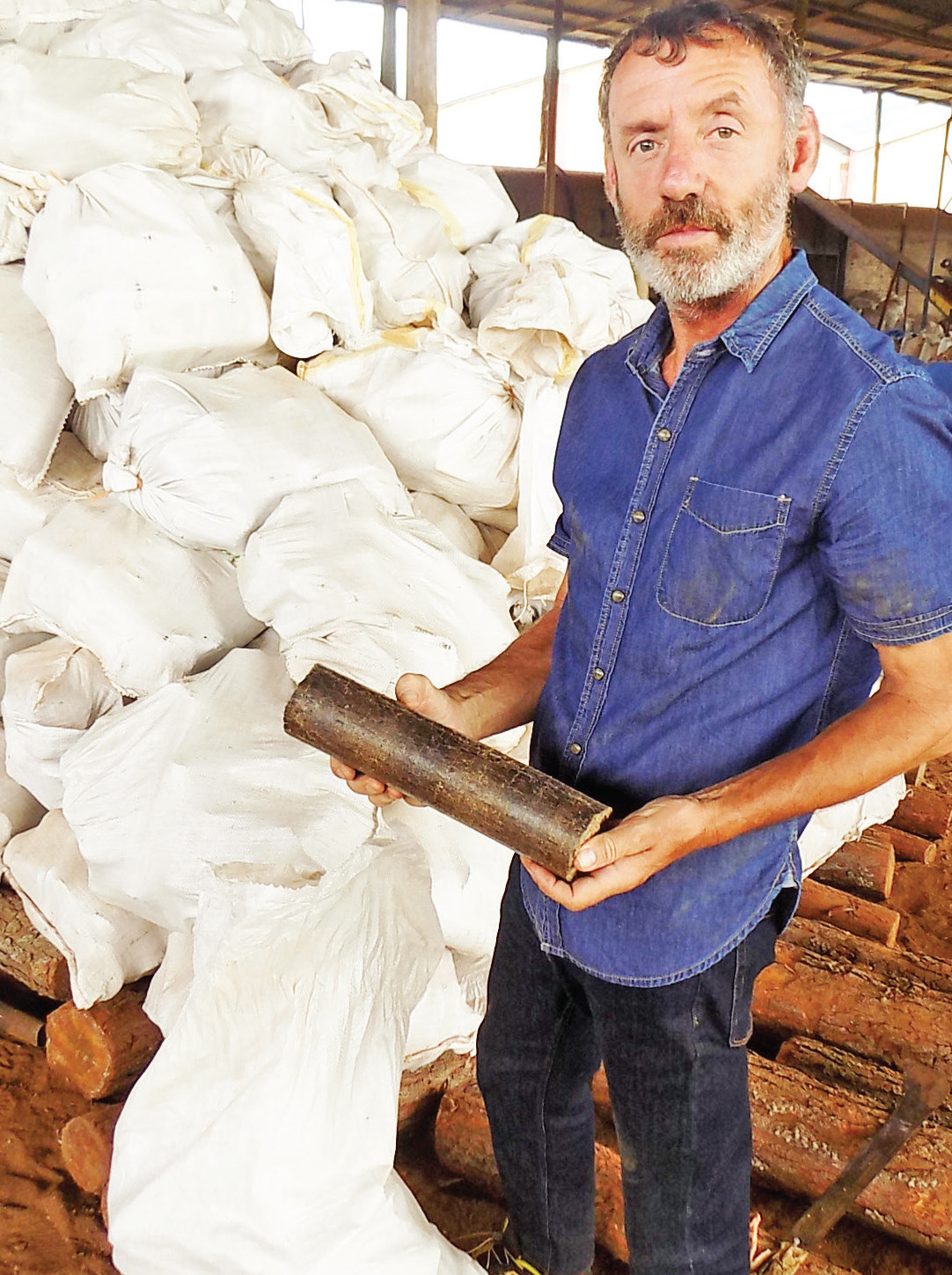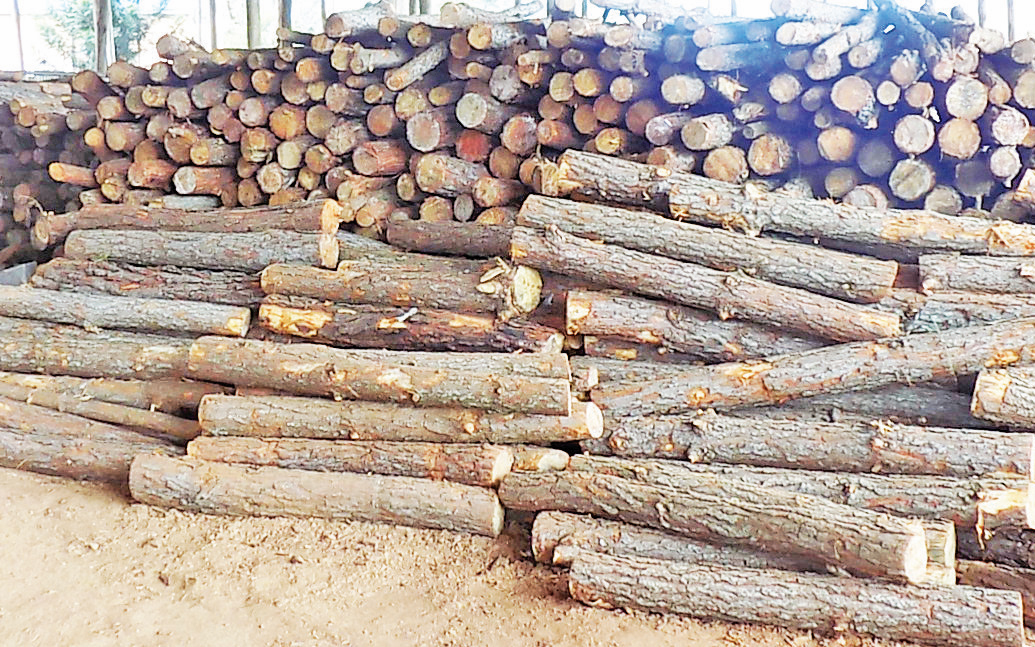
THE CHALLENGE
The use of firewood not only causespollution especially with smoke, butalso leads to forest depletion, anotherenviromental hazard.
THE SOLUTION
Adopting the use of briquettes madefrom timber and grass. It not only savesenergy, but also combats forest depletionand is environmentally-friendly.

By Joshua Kato
Machines purr away as theyare fed a mixture of sawdust,shavings and groundnut huskswhich is baked into briquettes.
This is at Green Elephantoffices at Wattuba on BomboRoad. The briquettes are goodfor cooking and baking.
The factory plans to startusing energy grasses likeelephant grass to makebriquettes.
“Turning pastures into fueladds value to them. Demandis increasing as more peoplelearn about this fuel.
“A kilogramme of briquettescosts sh950, while 5kg of woodcost around sh1,500 in mosturban areas. Research showsthat to boil a kilogramme ofdry beans, one needs 2kg ofbriquettes or 10kg of firewoodfor the same,” Chris Littlejohn,the Green Elephant’s Plantationand Research Manager, says.
Farmers are able to sell theirwood. “We need pine wood.A tonne costs sh70,000-sh100,000,” he adds.
What is cheaper?
Among the institutionssupplied is Ngeye bakery,where the first trial about thebriquettes was done. “Thebakery uses only briquettesnow. Our evaluation showsusing briquettes is cheaper andless toxic to the environmentthan other options,” Littlejohnsays.
To evaluate briquettesvis-a-vis other sources ofheat, three firewood stoveswere used to cook batchesof between 130 and 144doughnuts at the bakery. Onestove was modified to takebriquettes only. Modificationinvolved reducing the sizeof the burning chamberwith insulation cement. Thefirewood stoves had been modified for burning efficiencyby placing insulating cementaround them.
Briquettesensure aconstantcookingtemperature, resulting inless oil usage
“The test was designedto compare the amount ofwood or briquettes requiredto cook five rounds ofdoughnuts. During the test,the temperature of the fat ofboth stoves was monitoredand all burning material waspre-weighed. The numberof doughnut rounds wasrecorded. The target was fiverounds.
“Prior to firing the stoves,the weight of firewood andbriquettes required to start the cooking process was recordedand 80 litres of cooking oilplaced in each pan. The timeof starting both fires wasrecorded. The oil temperaturewas recorded every 10 minutesfor both stoves. Any additionsof oil and fuel were weighedand were recorded.
Once the oil was heatedto the required temperature,doughnuts were added. Thetime of adding to the pan andtaking out doughnuts wasrecorded. Firewood was addedwhenever it was necessary.Briquettes were added inbatches of 3kg when there was no visible defined briquettestructure in the burningchamber, but the fire itselfwas still glowing. This was toensure the briquette fire didnot lose its heat.
The briquettes tooklonger to reach the requiredtemperature. This delayedcooking time of doughnuts by25 minutes. However, oncecooking temperature had beenachieved, the fat temperatureremained relatively constantthroughout cooking. Thismeant there were no delaysbetween rounds and cookingtime remained between seven to 13 minutes. For thefirewood, it took a short timefor the fat to be heated to therequired temperature, but itwas soon too hot. To reducethe temperature, fat was added.During cooking, there was aconstant battle to keep the fatat the required temperature.
“When the oil was too hot,the doughnuts cooked tooquickly and were smaller thanthe ones from the briquettestove. Cooking time forfirewood ranged from 10 to23 minutes depending on theoil temperature,” Littlejohnexplains.
Both completed cookingof the five rounds at thesame time. The wood stoveburnt 80kg of firewood andan additional 80 litres of oilwhich was added to controltemperature. The briquettestove burnt 12kg of briquetteswith no additional oil added.Thus, briquettes are cheaper.
In addition to reduced fuelusage and better temperaturecontrol, the briquettes emittedlimited smoke. They were alsoeasier to handle and resultedin an improved workingenvironment for the workers.
“It is not just about reducingthe cost of cooking, butalso creating a healthierenvironment without smoke,”says one of the bakers.
The cooking process withbriquettes used 15% of thetotal amount of firewoodused. The briquettes ensure aconstant cooking temperature,resulting in less oil usage.
While they are working tospread this resource aroundthe country, they have beenfaced with challenges. “Oneof the challenges is marketingbriquettes to the population.People take long to adapt newtechnologies even if they arebetter technologies,” Littlejohnsays.

Littlejohn holding a briquette. Using briquettes cutscosts for cooking, saves energy and is environmentallyfriendly because briquettes do not give off smoke

Pine wood is used in the process of making briquettes
USE OF WOOD AND CHARCOAL
“Over 90% of Ugandan households use wood fuelfor cooking,” according to Vincent Ssennono, a leadresearcher at the Uganda Bureau of Statistics (UBOS).
Almost every household in the country uses charcoalor firewood for cooking, the 2016/2017 Uganda NationalHousehold Survey has noted. The survey also revealsthat the dependency on firewood for fuel energy isstraining the environment.
Ssennono says a large portion of households usingwood fuel for cooking is in Karamoja, West Nile andKigezi sub-regions.
However, Chris Littlejohn the Green Elephant’sPlantation and Research Manager, says bulk usage ofwood can easily be reduced by using briquettes.





